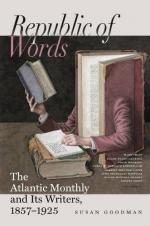It was partly from tradition, partly from the record which Dante himself had left of it, that Boccaccio drew his account of this scene. In the Vita Nuova, “The New Life,” Dante has written the first part of the history of that love which began at this festival, and which, growing with his growth, became, not many years after, the controlling passion of his life. Nothing is better or more commonly known about Dante than his love for Beatrice; but the course of that love, its relation to his external and public life, its moulding effect upon his character, have not been clearly traced. The love which lasted from his boyhood to his death, keeping his heart fresh, spite of the scorchings of disappointment, with springs of perpetual solace,—the love which, purified and spiritualized by the bitterness of separation and trial, led him through the hard paths of Philosophy and up the steep ascents of Faith, bringing him out of Hell and through Purgatory to the glories of Paradise and the fulfilment of Hope,—such a love is not only a spiritual experience, but it is also a discipline of character whose results are exhibited in the continually renewed struggles of life.
The earthly story of this love, of its beginning, its irregular course, its hopes and doubts, its exaltations and despairs, its sudden interruption and transformation by death, is the story which the “Vita Nuova” tells. The narrative is quaint, embroidered with conceits, deficient in artistic completeness, but it has the naivete and simplicity of youth, the charm of sincerity, the freedom of personal confidence; and so long as there are lovers in the world, so long as lovers are poets, so long will this first and tenderest love-story of modern literature be read with appreciation and responsive sympathy.




